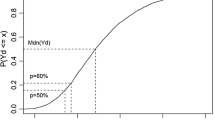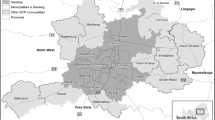Abstract
In inter-household welfare comparisons, equivalence scales have been traditionally used as a tool for making comparisons among households with different composition, as well as to assess the cost of additional household components, with focus on cost of children. No reference has been explicitly made to the time/space dimensions, except the time one implicit in the inter-temporal approach. No attention has been paid so far to a possible role of them in space framework. Based on previous works by the author and associate, this paper investigates the use of equivalence scales as inter-household income spatial deflators, through a geographically, socio-economically and demographically extended PS-GAIDS model named PGSEDS-GAIDS that allows to account not only for space, but also for social, economic and demographic variables other than number and age of additional components. By using the Italian Household Budget Survey micro-data base, evidence on Italian inter-regional household comparisons are obtained and discussed, showing that, despite several problems remain open and more than one remark can be made, it may be worth using equivalence scales in space domain.
This paper, although focusing on equivalence scales and their use in household welfare spatial comparisons, summarises the research work path the author has been following during the two year duration of the project: “Household Welfare Comparisons by Area in Italy by Means of Equivalence Scales, Poverty Indices and Deflated Gini Concentration Ratios”. The research has been supported by the Italian Ministry of Education, University and Research (Ministero dell’Istruzione, dell’Università e della Ricerca (MIUR)) in the framework of the 40% funds.
It travels over again the theoretical way covered, the developments met by author’s mental approach to the subject, the modifications brought in his way of looking at the equivalence scales and to their use in the field of household welfare measurement and comparisons. The author wishes to thank the attendants to the “International Seminar on Equivalence Scales, Household Behaviour and Welfare” held in Florence on June the 27th—28th, 2002 for the rich discussion of the paper and their valuable comments. Needless to say, he solely has the responsibility of any eventual errors.
Access this chapter
Tax calculation will be finalised at checkout
Purchases are for personal use only
Preview
Unable to display preview. Download preview PDF.
Similar content being viewed by others
References
Banks, J., Blundell, R., Lewbel, A., (1992), Quadratic Engel Curves and Consumer Demand, Institute for Fiscal Studies, Working Paper W92/8.
Barten, A.P., (1964), Family Composition, Prices and Expenditure Patterns, in Econometric Analysis for National Economic Planning, P.E. Hart and J.K. Whittaker (Eds.), Butterworth, London.
Blacklow, P. (2002), Intertemporal Equivalence Scales: Measuring the Life-Cycle Costs of Children, Mimeo, School of Economics, University of Tasmania.
Blackorby, C, Donaldson, D., (1993), Measuring the Cost of Children: A Theoretical Framework, in The Measurement of Household Welfare, R. Blundell, I. Preston, I. Walker (Eds.), CUP, Cambridge.
Blundell, R., Lewbel, A., (1991), The Information Content of Equivalence Scales, Journal of Econometrics, Vol. 50, 49–68.
Chatterjee, S., Ferrari, G., Michelini, C. (1998), Preference Consistent Demand Systems: A Comparative Study of Household Consumption, Economic Notes, Vol. 27, n.2, p. 171–204.
Cowell, F., Mercader-Prats, M (1999), Equivalence Scales and Inequality, Discussion Paper No. DARP 27, London School of Economics, March
Deaton, A.S., Muellbauer, J., (1980), An Almost Ideal Demand System, American Economic Review, Vol.70, 312–336.
Ferrari, G., Maltagliati, M. (1999), Estimating and Comparing Equivalence Scales from Pooled Cross Section-Time Series of Expenditure Micro-data from the Italian Family Budget Survey 1987-1995, “ Working Papers ” N. 81, Dipartimento di Statistica di Firenze, p. 1–32.
Ferrari, G., Maltagliati, M. (2000a), Estimating the Cost of Children for Divorced Parents in Toscana, Quantitative Methods in Economics (Multiple Criteria Decision Making X), The Slovak Society for Operations Research & University of Economics in Bratislava, November-December, p. 29–35.
Ferrari, G., Maltagliati, M. (2000b) Confronti di benessere delle famiglie italiane, Rivista di Economia, Demografia e Statistica, Vol. LIV-N.1, gennaiomarzo, p. 87–100.
Ferrari, G. (2000), Equivalent Incomes Based Upon Equivalence Scales as a Tool for Economic and Social Policy in Toscana, Italy, Proceedings of the 22 nd SCORUS Conference on Regional and Urban Statistics and Research, Shenzhen, China, 7–10 November.
Garner, T., Johnson, D.S. (1992), Estimating Unique Equivalence Scales, Paper presented at the 22 nd General Conference of the IARIW, Flims, Switzerland, August 31-September 5.
Gorman, W.M., (1976), Tricks with Utility Functions, in Essays in Economic Analysis, Proceedings of the 1975 AUTE Conference, Sheffield (ed. M.J. Artis and A.R. Nobay), Cambridge University Press, Cambridge.
Lancaster, J., Ray, R., (1997), Comparison of Alternative Methods of Estimating Household Equivalence Scales: The Australian Evidence on Pooled Time Series of Unit record Data, Discussion Paper, 1996-11, Department of Economics, University of Tasmania, Hobarth.
Lewbel, A., (1989), Household Equivalence Scales and Welfare Comparisons, Journal of Public Economics, Vol.39, 377–391.
Muellbauer, J., (1977), Testing the Barten Model for Household Composition Effects and the Cost of Children, The Economic Journal, vol.87, 460–487.
Pollak, R.A., Wales, T.J., (1979), Welfare Comparisons and Equivalence Scales, American Economic Review, vol.69, 216–221.
Pollak, R.A., Wales, T.J., (1980), Comparison of the Quadratic Expenditure System and Translog Demand Systems with Alternative Specifications of Demographic Effects, Econometrica, vol.48, 595–612.
Pollak, R.A., Wales, T.J., (1981), Demographic Variables in Demand Analysis, Econometrica, vol.49, 1533–1551.
Ray, R., (1983), Measuring the Cost of Children: an Alternative Approach, Journal of Public Economics, vol.22, 89–102.
Szulc, A. (2002), Equivalence Scales for Poland: How Sensitive to the Methods Are They?, paper presented at the IARIW Conference, Stockolm, August.
Author information
Authors and Affiliations
Editor information
Editors and Affiliations
Rights and permissions
Copyright information
© 2004 Springer-Verlag Berlin Heidelberg
About this paper
Cite this paper
Ferrari, G. (2004). Using Equivalence Scales as Spatial Deflators: Evidence in Inter-Household Welfare Regional Comparisons from Italian HBS Micro-Data. In: Dagum, C., Ferrari, G. (eds) Household Behaviour, Equivalence Scales, Welfare and Poverty. Contributions to Statistics. Physica, Heidelberg. https://doi.org/10.1007/978-3-7908-2681-4_12
Download citation
DOI: https://doi.org/10.1007/978-3-7908-2681-4_12
Publisher Name: Physica, Heidelberg
Print ISBN: 978-3-7908-0108-8
Online ISBN: 978-3-7908-2681-4
eBook Packages: Springer Book Archive




